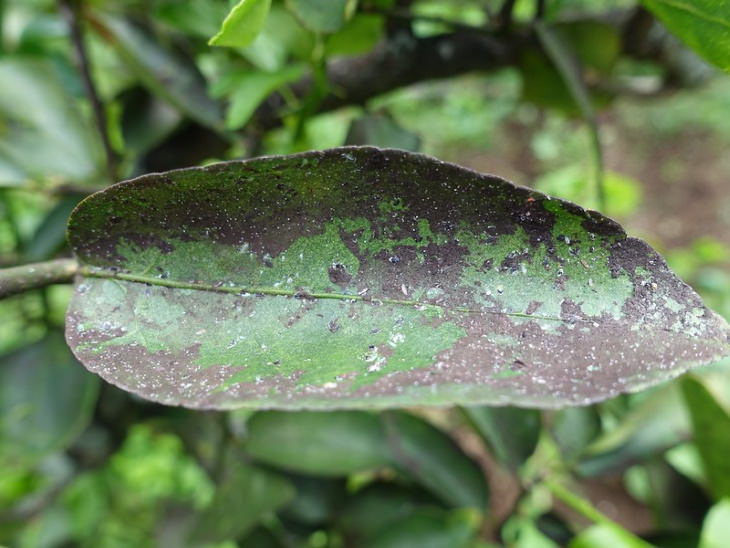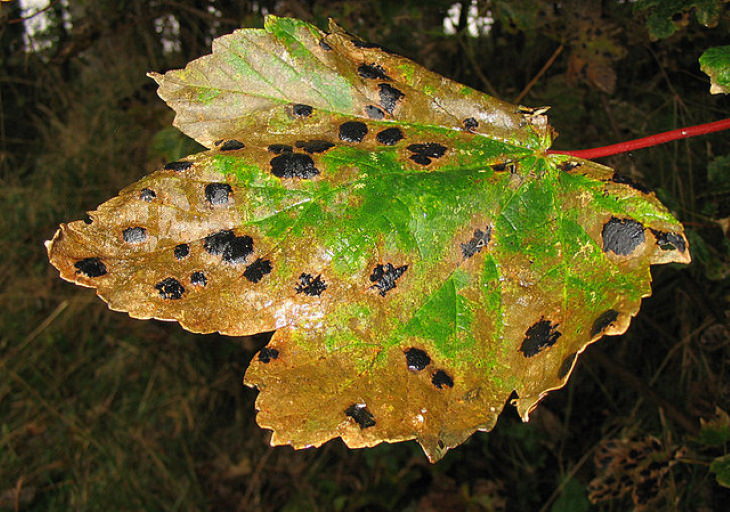
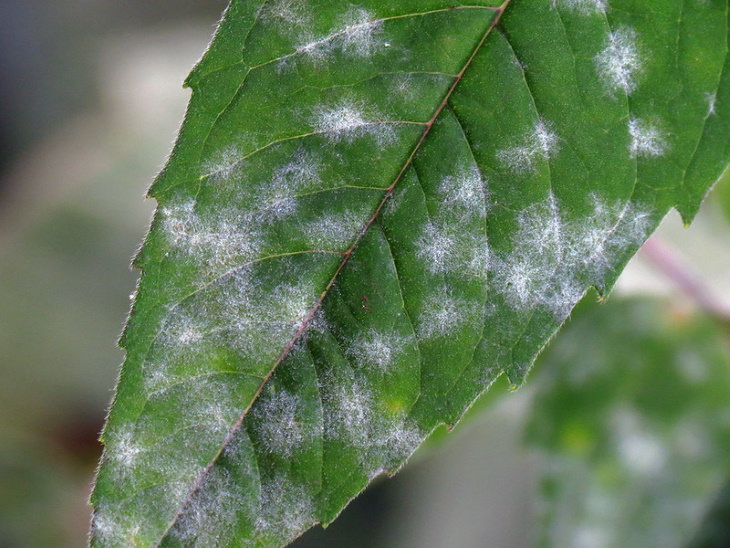
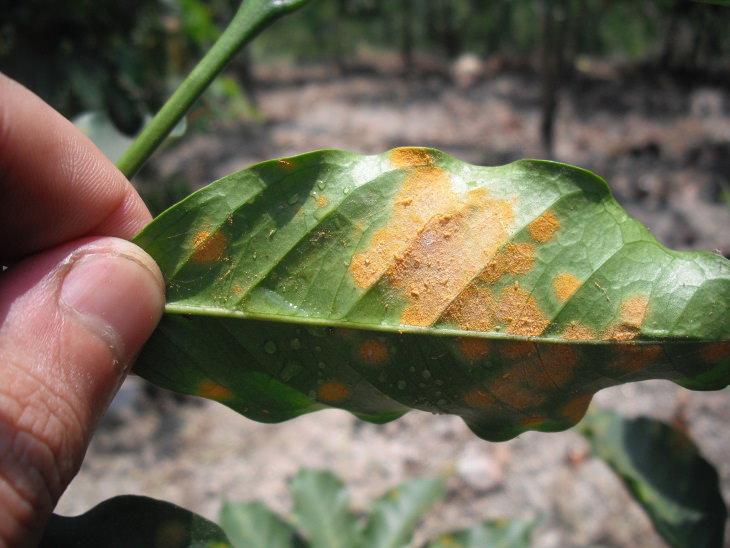
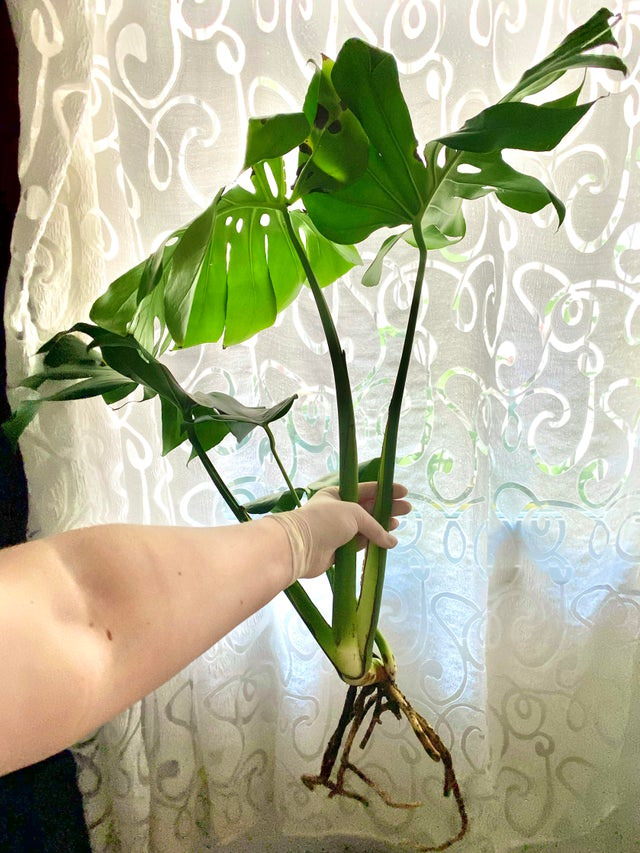
Root rot is another widespread issue, especially in potted plants. Root rot occurs in two scenarios: some kind of fungus living in the soil or prolonged overwatering. In most cases, both overwatering and pathogens are involved. Slowly but steadily, the plant’s roots start to rot away.
What it looks like: If you notice that the leaves of your plant are turning yellow and wilting for unknown reasons, you’ll need to take out the plant from the pot and check the roots. Gently remove the soil from the roots and examine them. Affected roots may turn black, feel mushy to the touch, or fall off altogether. Healthy roots, on the other hand, feel flexible and firm.
What you can do: First and foremost, it’s important to act fast because the rot can spread to healthy roots and kill them rather quickly. Gently wash the roots of the plant with water and trim away the affected roots, occasionally disinfecting the shears with rubbing alcohol.
If you had to remove a significant part of the root system, prune one-third of the plant’s leaves as well. Discard the old potting soil and wash the pot using bleach. Repot the plant, making sure that it has good drainage. Avoid overwatering the plant and only water when the top of the soil is dry.
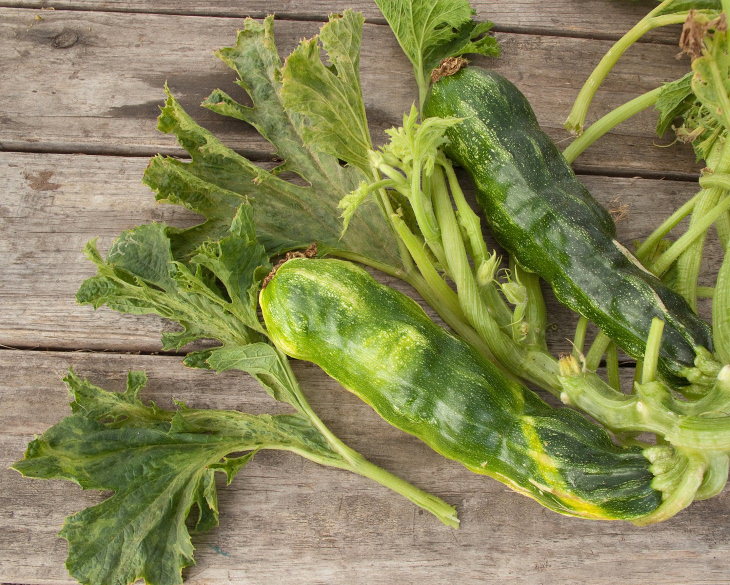
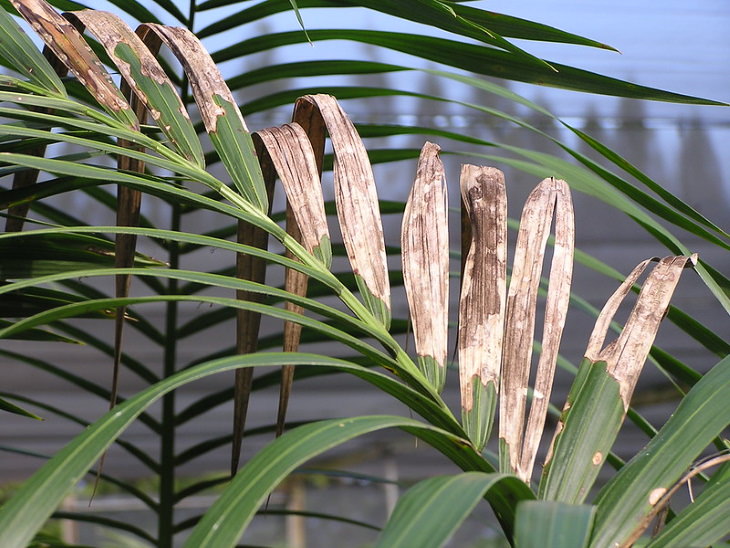
Cylindrocladium fungi can be the reason behind many common plant ailments, including root rot, lower stem blight, and leaf spots. The disease can affect legumes, trees, and ornamental plants.
What it looks like: Since the fungus can infect any part of the plant, the symptoms can vary from dark spots on the leaves, yellowed and wilted lower leaves, and root rot. Cylindrocladium spores are transmitted through water, so splashes of water can cause leaf spots. If several plants are placed on a flat surface, water leaking from the infected planter can get to the root systems of other plants and spread the disease.
What you can do: Treating Cylindrocladium is difficult because fungicides can only prevent the disease from spreading to other plants, but will not cure the affected plant. Hence, affected plants should be discarded. To prevent Cylindrocladium in plants, it’s important to make sure that your potted plants are well-drained. It's also important to keep the leaves of the plants dry, especially in the evening.
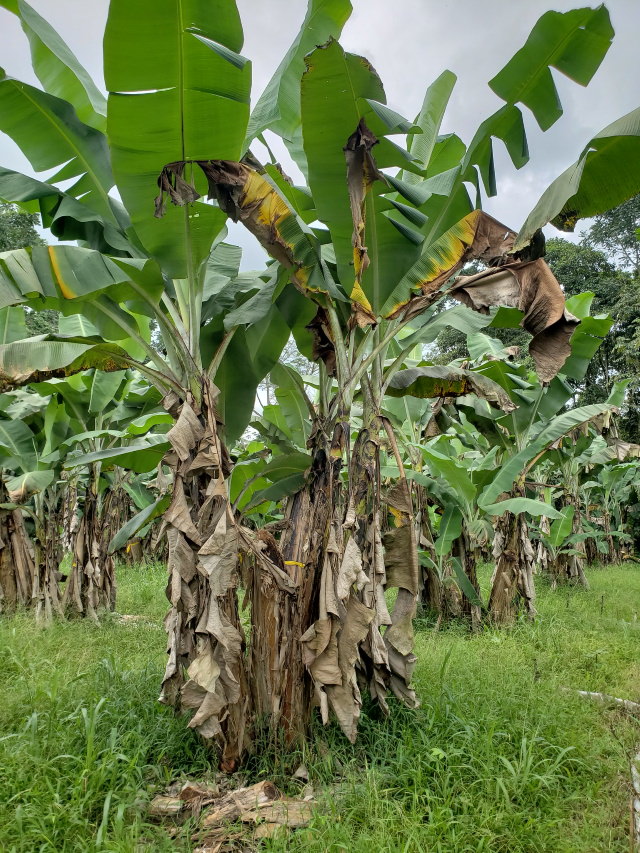
Image Source: Scot Nelson/ Flickr
Verticillium wilt and fusarium wilt are also caused by soil-borne fungi, and they affect hundreds of plant species. Trees, shrubs, ornamental and edible plants are all susceptible to these pathogens. Famously, fusarium wilt, commonly known as Panama disease, lies behind the extinction of the Gros Michel banana species in the 1960s and is threatening banana plantations worldwide today.
What it looks like: These fungi make their way to the plant’s stem through the roots, blocking the vascular system that provides the leaves and stems with nutrients. As a result, the foliage of the plant suddenly turns yellow, wilts, and falls off. The disease can also cause root rot.
What you can do: These fungi can survive in the soil for years and no effective fungicides are available to home gardeners. If fusarium wilt or verticillium wilt appears in your garden, destroy all the infected plants immediately and avoid planting species susceptible to the fungi for 5 years. Sterilizing all the tools with a bleach solution after use is also recommended.
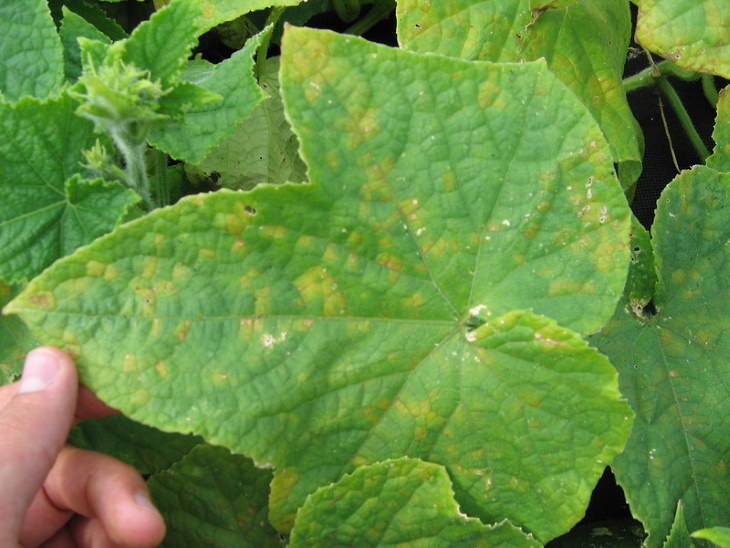
Downy mildew is caused by parasitic oomycete microbes that live and feed on plants. The ailment occurs in many edible plants, such as lettuce, broccoli, and cauliflower, but it’s a particular nuisance for those who grow fruits and vegetables on vines, such as grapes.
What it looks like: Usually, dowry mildew appears in wet and humid weather. The top part of the leaves becomes patchy and discolored, whereas the bottom part develops gray mold.
What you can do: Once again, fungicides are not effective at treating this ailment. Therefore, it’s important to observe the plants and consistently remove and get rid of infected leaves or even entire plants if they’re badly affected. To prevent the ailment from spreading, avoid crowding plants and keep the garden clean.
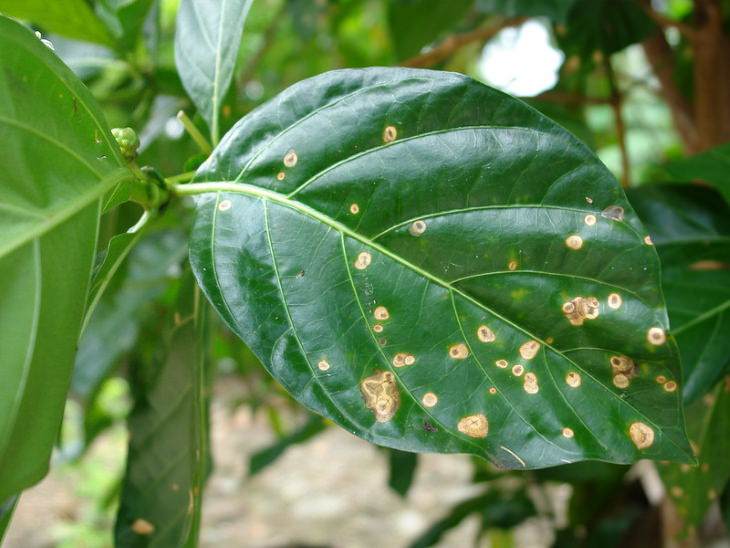
This is another fungal disease that usually attacks plants in cool and humid weather. The ailment may become dormant during the summer heat and then reappear in the fall because rainy weather creates the perfect conditions for the fungus to spread. The disease can reappear every year, but it is rarely fatal for the plant. Anthracnose can infect edible plants, grass, trees, shrubs, and even potted plants, such as palms, ficus trees, and succulents.
What it looks like: Anthracnose lesions appear on the leaves and twigs of plants. They look like small, dark, sunken spots. Notably, the bottom of leaves affected by the fungus will be dotted with brownish spots the size of a pinhead.
What you can do: To limit anthracnose, trim the affected leaves regularly and clear away any fallen leaves or twigs from the ground. The fungus can overwinter inside fallen twigs and leaves, so make sure to get rid of them regularly.
